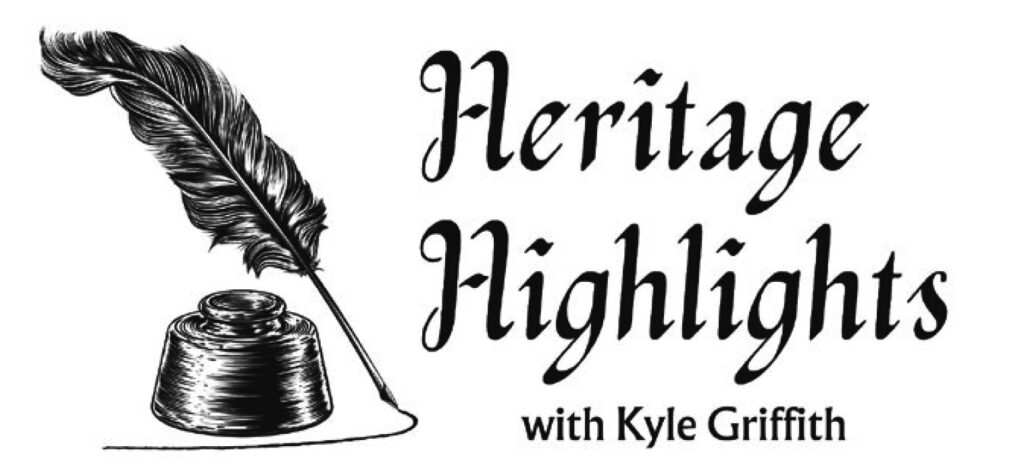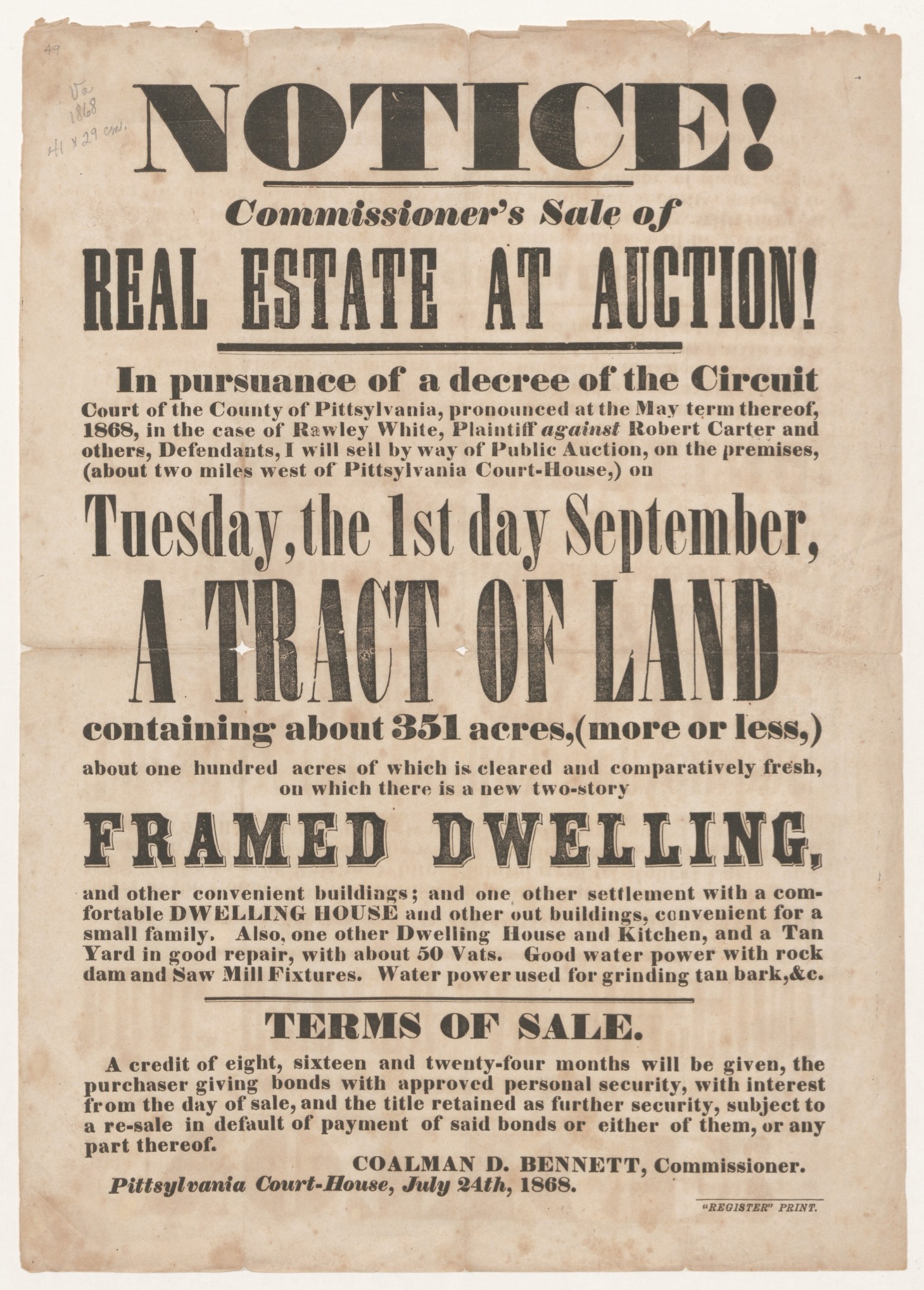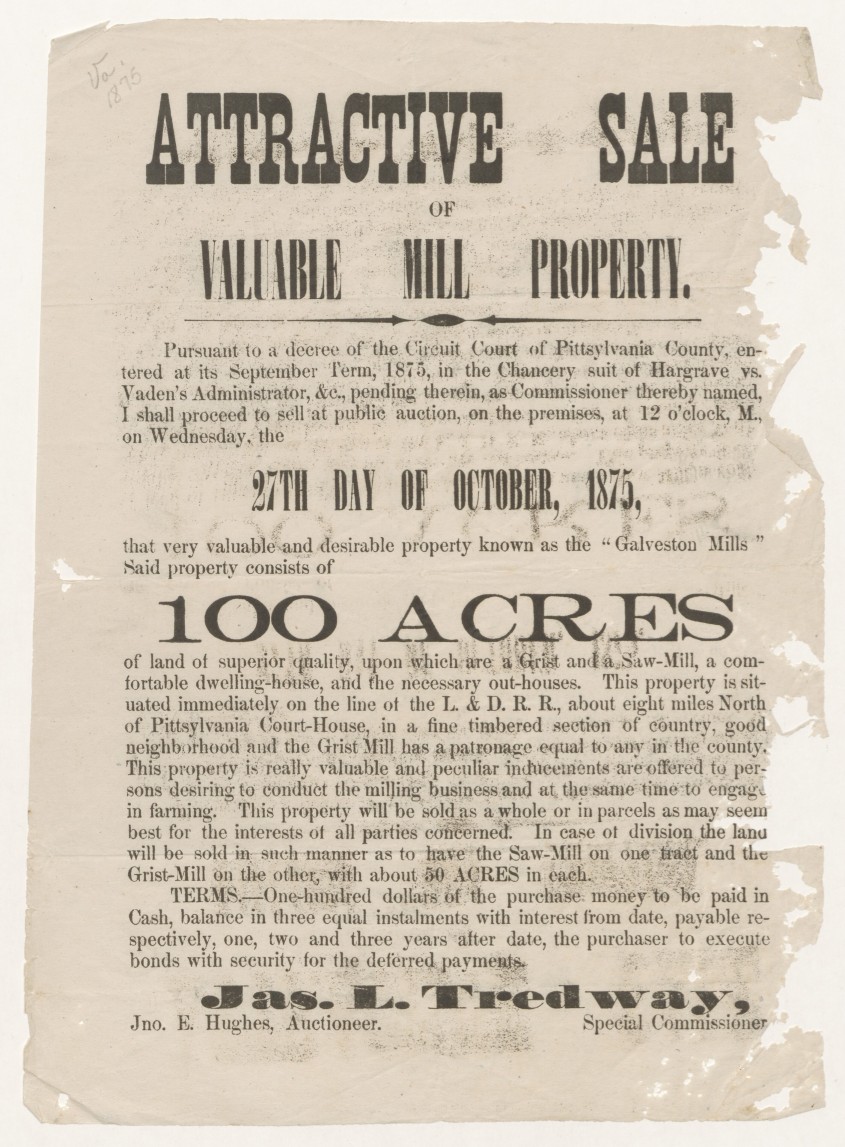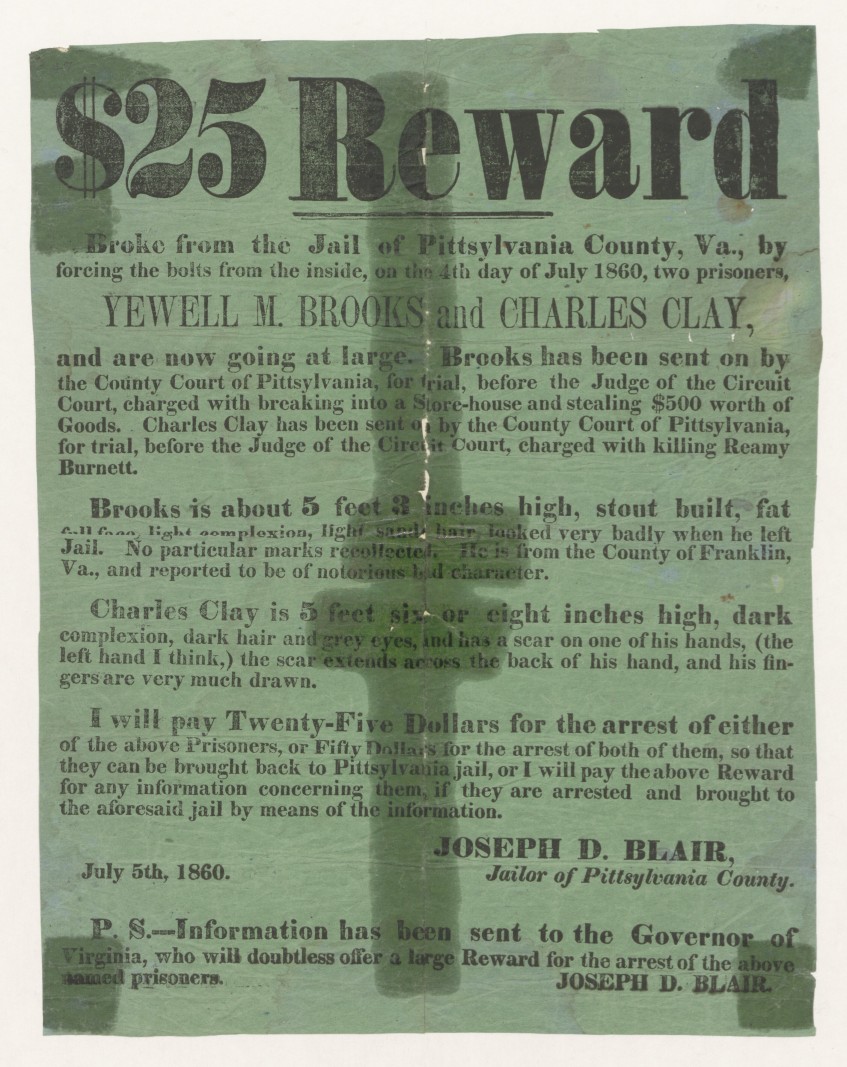
**This research was first published in the February 19, 2025 edition of the Chatham Star-Tribune newspaper as part of Kyle Griffith’s weekly segment entitled “Heritage Highlights.”
Figure 1: Real Estate Auction Notice by Coleman D. Bennett from 1868
During the 1800s, legal notices of land auctions and wanted persons were posted around town at the courthouse, in general stores, post offices, and other busy communal locations. Some of the old notices have survived and are available to find on the Digital Public Library of America website. Here are transcriptions of three postings from over 150 years ago. Some of the names will be familiar to those rehearsed in Chatham’s history.
The following advertisement was issued by commissioner James L. Tredway for one of the major historic grist mills in the county: “ATTRACTIVE SALE OF VALUABLE MILL PROPERTY…the Chancery suit of Hargrave vs. Vaden’s Administration, &c…I shall proceed to sell at public auction, on the premises, at 12 o’clock, M., on Wednesday, the 27TH DAY OF OCTOBER, 1875, that very valuable and desirable property known as the “Galveston Mills” Said property consists of 100 ACRES of land of superior quality, upon which are a Grist and a Saw-Mill, a comfortable dwelling-house, and the necessary out-houses. This property is situated immediately on the line of the Lynchburg & Danville Railroad, about eight miles North of Pittsylvania Court-House, in a fine timbered section of country, good neighborhood and the Grist Mill has a patronage equal to any in the county…In case of division the land will be sold in such manner as to have the Saw-Mill on one tract and the Grist-Mill on the other, with about 50 ACRES in each. John E. Hughes, Auctioneer.” (See figure 2 below)
Figure 2: Sale of Galveston Mill Property, 1875
The second real estate sale was posted in the case of Rawley White, (a first cousin to Col. Rawley White Martin), Commissioner Coleman D. Bennett overviewed the sale: “NOTICE! …I will sell by the way of Public Auction on the premises, (about two miles west of Pittsylvania Court-House,) on Tuesday, the 1st day September, A TRACT OF LAND containing about 351 acres, (more or less,) about one hundred acres of which is cleared and comparatively fresh, on which there is a new two-story FRAMED DWELLING and other convenient buildings; and one other settlement with comfortable DWELLING HOUSE and other out buildings, convenient for a small family. Also, one other Dwelling House and Kitchen, and a Tan Yard in good repair, with about 50 Vats. Good water power with rock dam and Saw Mill Fixtures. Water power used for grinding tan bark, &c.” (See figure 1 at top of page).
The last notice was issued by Joseph D. Blair, jailor of Pittsylvania County at the time, who was also a brother-in-law to the previously mentioned Rawley White. “$25 Reward. Broke from the Jail of Pittsylvania County, Va., by forcing the bolts from the inside, on the 4th day of July 1860, two prisoners, YEWELL M. BROOKS and CHARLES CLAY, and are now going at large.” Brooks was “charged with breaking into a Store-house and stealing $500 worth of Goods.” Charles Clay’s actions were worse, as he was “charged with killing Reamy Burnett.”
“Brooks is about 5 feet 3 inches high, stout built, fat full face, light complexion, light sandy hair, looked very badly when he left Jail. No particular marks recollected. He is from the County of Franklin VA., and reported to be of notorious bad character. Charles Clay is 5 feet six or eight inches high, dark complexion, dark hair, and gray eyes, and has a scar on one of his hands, (the left hand I think,) the scar extends across the back of his hand, and his fingers are very much drawn. I will pay Twenty-Five Dollars for the arrest of either of the above Prisoners…so that they can be brought back to Pittsylvania jail…July 5th, 1860.” (See figure 3 below)
Figure 3: Wanted Poster by Jailor Joseph D. Blair, 1860.
It is a wonder that these documents have survived long enough for someone to digitize them for the public domain. The jailor’s notice was printed on green paper that still bears marks from the old paste that glued them up for all of Chatham to see. The others have browned and tattered with age, but the bold text and historical stacked typefaces are still easily read.



